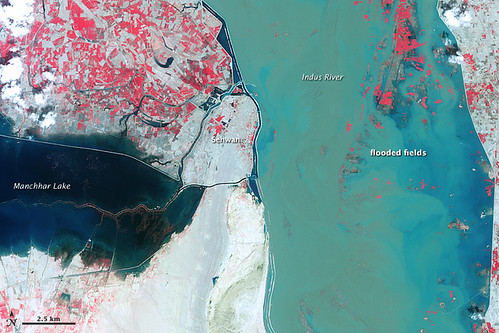#Predictive Maintenance 2.0
Explore tagged Tumblr posts
Text
Salesforce AI in Manufacturing: 21 Future Trends Explained
As businesses move toward intelligent, automated, and data-driven production ecosystems, Salesforce AI in manufacturing is redefining the future of industrial operations. This evolution is being made possible by platforms such as Salesforce Manufacturing Cloud, Salesforce Einstein GPT, and Agentforce for Manufacturing, which offer real-time decision-making, automation, and predictive capabilities throughout the manufacturing value chain. Manufacturers are using AI-powered CRM for manufacturers to automate everything from quality control and demand forecasting to compliance and customer engagement, with the help of Salesforce consulting partners like GetOnCRM. Among the 21 major trends that are changing the industry, autonomous factory systems powered by Agentforce services for manufacturing are allowing machines to make decisions in real time with little human intervention, and predictive maintenance 2.0 is reducing unscheduled downtime. Demand forecasting tools like Salesforce Einstein GPT guarantee that production and inventory levels match market demands, while Salesforce CRM for manufacturers permits highly customized product design. Digital twins and AI-based quality control optimize maintenance and performance on the factory floor, while Salesforce Manufacturing Cloud dashboards provide real-time analytics. Salesforce Agentforce for regulatory management guarantees proactive monitoring and audit readiness, so compliance is no longer reactive. AI-optimized 3D printing and AI-powered generative design tools, meanwhile, speed up innovation and production. Even cybersecurity is changing; smart factory infrastructure is protected by cybersecurity tools driven by Salesforce AI. Lastly, GetOnCRM's Salesforce AI workforce management solutions are revolutionizing the way manufacturers automate the management of teams, tasks, and shifts. With scalable solutions that support digital transformation from the shop floor to executive strategy, GetOnCRM continues to assist companies in realizing the full potential of Salesforce AI integration in manufacturing as these trends come together.
Are you curious about how Salesforce AI can revolutionize your manufacturing operations? read more
#Salesforce AI in Manufacturing#Salesforce Manufacturing Cloud#Salesforce Einstein GPT#Agentforce for Manufacturing#AI powered CRM for manufacturers#Smart Manufacturing 2025#GetOnCRM Salesforce Services#Predictive Maintenance 2.0#AI based Quality Control#Digital Transformation in Manufacturing
0 notes
Text
A Programming Hook
Object-Oriented Programming's strength is Modularity; and just about everything coded today follows the OOP design. Except Python and JavaScript--sometimes.
So I've coined a term "Hook"; not to be confused with a fishing-line-hook, or the literary tool where you write the most interesting part of your whole story into the first sentence.
A [Hook] in this regard is a [Space for Something]{to go} like a nook or a closet. You don't know *what* might go into that nook or closet; you just know there are *things* with which are properly displayed or stored in a Nook or in a Closet.
And this is the same concept.
There's a *whole* lot of features that we'd might *wish* to add to a coding project, yet time and funding constraints, oftentimes, makes it hard to include every feature one might want.
In this vein; we add space for the features we might want to add *after* we finish all the important bits.
This is very important in [Software Engineering], because there will be a time in a project where you make it to an important feature that you cannot implement *without* having had re-written the *whole* thing.
And so, you want options available when that inevitably comes to pass.
Now. I developed this whole making [Training Simulations] in the [Air Force] and when I tell you; one day somebody asked me to do something that may have added several weeks to the development time.
They asked "How long will this take to [fix]?" To which I responded; "I'm not sure. I think I remember adding some hooks that would make this easy, and it could be done tonight. But as it wasn't a requirement *at the time* this may take 2-4 weeks to implement if I have to rework it from scratch."
To which, they were very upset with my best time "4 hours, or the end of shift, whichever comes first" or "several weeks, because that would put us behind schedule."
"I'll get back to you at the end of day Chief!"
Non-developers, Maintenance Professionals like myself *actually* who're used to every little thing being documented and not *created on the fly* were rather upset with those timelines.
And I had already been reprimanded several times based on my timeline predictions.
Which uh. Were accurate. They just weren't particularly accurate *for me* whom'st {is/was} a very well educated developer... In a sea of maintainers who have not studied the code as I have done.
My timelines were usually off at this stage *because* I was getting my understanding of how the coders (who were also rather green) and the (maintainers become coders) would be able to understand the timelines.
I have to make clear; I was, in-fact, doing *my* job to the best of my ability, and even better than *your{my supervisor's}* ability despite them being very concerned about my time estimates being [too long].
Communication isn't bad on my side... Even when I appear to be bad at communicating.
One of these days I will not be so defensive! Yet the Anti-Trans sentiment remains, so will the SALT!
Anyway; these particular [Hooks] were contextual triggers. Things that would/should be called at certain times during certain steps in the simulation.
Custom CallBack functions mostly.
And these particular callbacks were rather complex for a simple one-function call event.
Luckily for my OCD brain; I had stopped to asked the question about this exact feature they wanted to add *now* that they had been worried about adding earlier, until the customer made it a [Need to have].
I had asked the question, at that time; "What happens if *this* particular feature *becomes* a Necessary addition."
Because my [awesome predictive abilities] were spot on about what they need that particular simulation to accomplish.
Luckily I had been stumbling through various frameworks and implementations of the Squadrons Honorable Historical Developments. (Part of the job was updating and modernizing old Adobe Flash 2.0 projects) And had stumbled across a few implementations of these features *both* before it was necessary *and* after it seems to have taken a week to tack on at the end.
And that's when I started adding the concept of "Hooks" to my personal development checklist. Everytime you ask yourself; "How might this feature be used outside this implementation" or "What happens if I need to add something *somewhere* that might break Modularity" is an opportunity to add in hooks.
"Can I go back, and reuse this feature to make my job easier in the future?"
Or you know; Object-Oriented Design (And Modularity) in a nutshell.
19 notes
·
View notes
Text
10 Essential Navy Current Affairs for 2025
In an era where maritime dominance is a pillar of global strategy, naval affairs continue to influence geopolitics, defense investments, and international diplomacy. As 2025 unfolds, navies worldwide are facing complex challenges—from cyber warfare to humanitarian missions—requiring cutting-edge innovation and multilateral coordination.

Here are 10 Essential Navy Current Affairs for 2025, curated exclusively for TheVeza, offering a comprehensive look at the forces transforming the world’s oceans.
1. Rise of AI-Powered Naval Warfare
Artificial Intelligence is no longer the future—it’s the now. In 2025, navies globally are integrating AI for enhanced threat detection, autonomous navigation, predictive maintenance, and strategic decision-making. The U.S. Navy's Project Overwatch and the UK's Poseidon AI Framework stand out, aiming to fuse manned and unmanned systems into a cohesive combat network.
2. Expansion of Indo-Pacific Naval Alliances
Geopolitical tensions in the South China Sea have intensified, pushing countries like India, Japan, Australia, and the U.S. to strengthen the QUAD naval alliance. 2025 sees increased joint exercises such as Malabar 2025, focusing on interoperability, submarine detection, and freedom of navigation operations (FONOPs).
3. Green Fleets & Sustainable Naval Operations
Environmental responsibility is now a national security issue. The navies of Canada, Norway, and Germany are investing in hybrid-powered warships and adopting carbon-neutral port operations. The Green Ocean Naval Pact, signed in early 2025, marks a collective step towards reducing maritime carbon emissions.
4. Cyber Defense: The Fifth Naval Frontier
Naval assets are increasingly targets of cyber intrusions. In 2025, cyber warfare capabilities are being prioritized alongside traditional firepower. NATO has launched the Maritime Cyber Shield Initiative, aiming to build resilient digital defense mechanisms across allied fleets.
5. Submarine Warfare Renaissance
Silent but deadly, submarines continue to evolve. Russia and China are deploying next-gen stealth submarines, while the U.S. Navy expands its Virginia-class fleet. Meanwhile, the AUKUS pact introduces nuclear-powered submarine technologies to Australia, altering strategic balances in the Indo-Pacific.
6. Arctic Naval Expansion
As polar ice recedes, new shipping routes and resource hotspots emerge. In 2025, Arctic patrols and base constructions are increasing. The Arctic Maritime Defense Council, involving Canada, Norway, and the U.S., now conducts seasonal operations ensuring territorial integrity and environmental monitoring in the North.
7. Maritime Humanitarian Missions Surge
From disaster relief to refugee rescues, navy ships are increasingly deployed for non-combat missions. In 2025, operations like HUMWAVES in the Indian Ocean are delivering aid to cyclone-hit regions, showcasing the Navy’s humanitarian reach.
8. Digitization of Naval Training and Recruitment
Gone are the days of chalk-and-talk naval training. Augmented Reality (AR), Virtual Reality (VR), and AI simulations now dominate the training arenas. The Indian Navy’s DIGINAV 2.0 platform is setting new benchmarks for immersive, real-time decision-making skills development among recruits.
9. Private Defense Contractors in Naval Logistics
Private firms are playing a larger role in naval support services. From drone logistics to underwater surveillance, defense contractors like Lockheed Martin, BAE Systems, and Larsen & Toubro are building tech-enabled logistics vessels, reducing state burden while increasing efficiency.
10. Focus on Women in Naval Leadership
2025 marks significant milestones for women in the navy. The U.S. Navy appointed its first female combat fleet commander in the Pacific, while nations like India and the UK have expanded combat roles and onboard leadership positions for women. The Global Women in Navy (G-WIN) initiative has launched mentorship and skill-building programs across allied forces.
Final Thoughts
The tides of naval transformation in 2025 are powerful, multilayered, and deeply interconnected with global power dynamics. From deep-sea drone warfare to green energy battleships, the world’s navies are adapting to not just threats, but responsibilities that define the very idea of maritime dominance in a tech-first, climate-conscious, and increasingly unstable world.
As TheVeza continues to chronicle these shifts, staying informed of these 10 essential Navy current affairs for 2025 ensures you're always ahead of the strategic curve.
0 notes
Text
Fantasy Cricket App Development: Features, Cost, and What’s New in 2025
Cricket fever is on the heights and with the upcoming major cricket tournaments, including the IPL 2025, ICC Champions Trophy 2025, and the India vs. Australia Test Series, it is time to turn to the idea of fantasy cricket app development. Fantasy cricket apps are transforming the meaning of digital sports entertainment in India and all around the world as their users seek interactive and rewarding experiences.
Be it start ups or enterprises, development of one owned app with assistance of a professional Fantasy Cricket App Development Company can enable you to create a difference in this rapidly rising market.
🚀 The Rise of Fantasy Cricket in 2025
That is no longer a matter of casual pastime, fantasy cricket has become a proprietary business concept. According to the reports in the industry, the fantasy sports market in India is projected to cross 60, 000 crores mark by 2025 of which more than 85 per cent of the customers base is dedicated to cricket.
With mega tournaments like:
IPL 2025 (April to June 2025)
ICC Champions Trophy (October 2025)
Pakistan Super League (March 2025)
India vs Australia Series (Jan–Feb 2025)
Asia Cup (August 2025)
Big Bash League (December 2025)
...the demand for engaging fantasy platforms is at an all-time high.
Creating your own app with a reliable, well-known fantasy cricket app development company is the best thing you can do now perhaps with IMG global Infotech, the number one company in India specializing in white label fantasy cricket app development and custom development.
🧠 Why Invest in Fantasy Cricket App Development?
Here’s why launching a fantasy cricket app in 2025 is a winning strategy:
Huge User Base: With millions of cricket fans, the potential market is massive.
Multiple Revenue Streams: Entry fees, in-app purchases, ads, and premium contests.
Year-Round Engagement: With multiple domestic and international series, users stay active all year.
Scalable & Flexible Business: Start with basic features and scale as needed.
Brand Collaboration: Partner with influencers, brands, or cricket leagues for promotions.
Fan Loyalty & Data Insights: Retain users with engagement tools and use analytics for smarter business moves.
By partnering with fantasy cricket app development companies in India, you gain access to advanced tech, secure backends, and feature-rich platforms that are market-ready.
⚙️ New Features in Fantasy Cricket Apps in 2025
The fantasy app landscape is evolving fast. To attract and retain users in 2025, your platform must include modern, user-centric features:
🔥 Latest Additions:
AI-Based Team Prediction: Suggest best players using AI algorithms.
Live Match Analytics: Real-time stats, heat maps, player momentum graphs.
Voice-Powered Team Creation: Use voice commands to select or drop players.
Fantasy NFTs: Reward top players with collectible NFTs.
Refer & Earn 2.0: Advanced multi-level referral systems.
AR-Powered Team Selection: Augmented reality to make fantasy team creation immersive.
Geo-Targeted Contests: Target contests based on user location.
Dynamic Bonus Systems: Performance-based or streak-based rewards.
Partnering with a top-tier fantasy cricket app development company like IMG Global Infotech ensures your app includes these cutting-edge features from day one.
💰 Cost to Build Fantasy Cricket App in 2025
The cost to build fantasy cricket app in 2025 varies based on several factors like features, platform choice, custom design, and third-party API integrations.
App Type Estimated Cost
Basic Fantasy App (Android/iOS) $8,000 – $12,000
Custom Fantasy App (Full Features) $20,000 – $35,000
White Label Fantasy Cricket App $6,000 – $10,000
AR/AI Features Integration Additional $5,000 – $10,000
Other recurring expenses will be the costs of hosting, maintenance, updates and getting new users. IMG Global Infotech provides cheap and scalable solutions that fit your business requirements hence it is the top app development company in India to know about fantasy sports.
🧩 White Label Fantasy Cricket App Development: Quick Launch, Big Gains
If you're looking to launch quickly and minimize development hassles, a white label fantasy cricket app development solution is the smartest route.
Advantages:
Faster Time to Market (5–10 Days)
Lower Cost of Entry
Fully Customizable Branding
Pre-Built Admin Dashboard
Secure Payment Gateway Integration
Multi-platform Support (Web + Mobile)
IMG Global Infotech specializes in white label fantasy sports software that’s robust, secure, and future-ready. Just plug in your brand, and you're ready to go live before the next cricket series starts!
🧑💻 Why Choose IMG Global Infotech as Your Fantasy Cricket App Development Company?
Here’s why IMG Global Infotech is a top choice for fantasy cricket app development companies in India:
✅ Proven expertise in developing fantasy sports platforms
✅ Offers both custom and white label fantasy solutions
✅ Competitive pricing and flexible development models
✅ In-house UI/UX, backend, and QA teams
✅ Ongoing support and maintenance post-launch
✅ 100% customizable, scalable, and secure platforms
✅ Quick updates for new cricket formats and rules
✅ SEO-friendly code and app store optimization (ASO)
From design to deployment, IMG Global Infotech delivers top-notch solutions to help you enter the market fast and grow with confidence.
🏆 Fantasy Cricket Tournaments to Target in 2025
To make the most of your app, align your launch and marketing strategies with these high-traffic tournaments:
Tournament Time
Asia Cup (T20) August 2025
ICC Champions Trophy October 2025
Big Bash League December 2025
These events will attract millions of users—perfect timing to promote your fantasy cricket app.
📱 Must-Have Features in a 2025 Fantasy Cricket App
Ensure your app includes the following to stay ahead of the competition:
Real-time live scoring
Player analytics & stats
Secure wallet & withdrawals
Push notifications
Leaderboards & reward system
Multiple contest types (Free, Paid, Private)
Social login & invite friends
Multi-language support
Admin control panel
Match highlights & instant replays
Chat rooms or community features
Bonus point systems
In-app support/chatbot assistance
✅ Conclusion
And the future of fantasy cricket App development in 2025 is going to be your chance to be a part of the booming wave of sports technology in India. As there are future series in production, such as IPL 2025 and the ICC Champions Trophy, the demand of the users is rising.
Regardless of whether you desire a feature-rich solution built specifically to meet your requirements or a white label fantasy cricket application, IMG Global Infotech, one of the reputed developers of fantasy cricket apps in India, can fulfill your dream with its competence and technology.
It is time to enter the arena and score big time in the fantasy gaming market.
❓FAQs: Fantasy Cricket App Development 2025
1. How much does it cost to build a fantasy cricket app in 2025?
The cost to build a fantasy cricket app ranges from $8,000 to $35,000, depending on features, platform, and customization levels.
2. What is white label fantasy cricket app development?
It’s a ready-made app solution that can be quickly branded and launched under your business name. It’s faster and more affordable than custom development.
3. Which is the best fantasy cricket app development company in India?
IMG Global Infotech is among the top fantasy cricket app development companies in India, offering both white label and custom solutions.
4. How long does it take to launch a fantasy cricket app?
With a white-label solution, it can take 7–10 days. A fully custom fantasy cricket app may take 8–12 weeks.
5. Can I add IPL 2025 and ICC events into the fantasy app?
Yes, using cricket APIs and real-time data integration, you can run contests for any live series including IPL 2025 and ICC Champions Trophy.
6. Can I monetize my fantasy cricket app?
Absolutely. You can earn through entry fees, premium leagues, ads, sponsorships, and more. Features like wallet systems and referrals also drive user engagement and revenue.
7. Do fantasy cricket apps require legal compliance in India?
Yes. You'll need to ensure your platform complies with Indian gaming laws and includes KYC, age restrictions, and payment gateway security measures. IMG Global Infotech helps integrate all legal safeguards.

#fantasy cricket app development#fantasy cricket app development company#fantasy cricket app development company in india#fantasy cricket app development cost#app like dream11#fantasy cricket app#img global infotech
1 note
·
View note
Text

Smart Energy Automation: Integrating Meters, IEDs and Edge Control
The future of energy automation lies at the intersection of intelligent field devices, real-time data, and robust edge computing. As power grids become more decentralized and complex, the ability to monitor, control, and optimize energy systems in real time—at the edge—is critical. At the heart of this transformation is the integration of smart meters, intelligent electronic devices (IEDs), and edge gateways such as the ARMxy series.
1. The Growing Complexity of Modern Energy Systems
Traditional energy networks operated in a largely unidirectional flow: from generation to transmission to distribution. Today, the landscape is far more dynamic. Distributed Energy Resources (DERs), electric vehicle chargers, battery storage systems, and intelligent substations demand bi-directional data flows, real-time control, and deep interoperability between heterogeneous devices.
This shift calls for a new layer of intelligence at the edge—between sensors and cloud—to ensure fast, autonomous decision-making and greater system resilience.
2. Role of Smart Meters and IEDs
Smart meters and IEDs are key components in energy infrastructure:
Smart Meters provide granular visibility into consumption, voltage, power factor, and more.
IEDs—such as protection relays, digital fault recorders, and reclosers—ensure system protection and automation.
However, these devices alone don’t offer unified control or cross-system intelligence. That’s where edge computing platforms like ARMxy come in.
3. ARMxy Edge Gateways as Integration Hubs
Our ARMxy edge gateways act as a protocol-agnostic bridge between field devices and higher-level systems. Supporting a rich set of industrial protocols—such as Modbus RTU/TCP, IEC 104, DNP3, IEC 61850, MQTT, and OPC UA—ARMxy can communicate directly with diverse meters and IEDs from different vendors.
Key features include:
Real-time data processing to filter, validate, and aggregate energy data before forwarding
Edge logic & automation using tools like Node-RED or custom scripts for on-device control
Secure communication with encryption and firewall support
Cloud connectivity for SCADA, EMS, or cloud analytics platforms
By pushing intelligence to the edge, ARMxy minimizes latency, offloads central systems, and ensures continuous operation even during network disruptions.
4. Practical Applications
In real-world deployments, ARMxy-powered systems are being used to:
Monitor transformer health and load status in substations
Manage energy quality across industrial campuses
Enable demand-side response by controlling loads based on tariff signals
Trigger alarms and protective actions when abnormal voltage, current, or temperature is detected
Interface with Building Management Systems (BMS) and Energy Management Systems (EMS)
For example, a utility company might use ARMxy to gather real-time voltage sag data from IEDs and push only events (rather than all raw measurements) to a central platform, reducing bandwidth while retaining operational insights.
5. Toward a Smarter, Greener Grid
The integration of meters, IEDs, and edge control forms the foundation of Smart Grid 2.0. It enhances energy visibility, optimizes asset performance, and enables predictive maintenance—all while lowering operational costs.
ARMxy’s modular design, flexible protocol support, and rugged industrial-grade hardware make it ideal for deployment in substations, renewable energy plants, and large-scale industrial facilities. Whether in remote rural areas or dense urban centers, edge automation ensures that power flows are not only monitored but intelligently managed.
Conclusion
Smart energy automation isn't just about collecting more data—it's about making smarter decisions closer to the source. By integrating smart meters, IEDs, and edge gateways like ARMxy, utilities and energy-intensive industries can build more adaptive, reliable, and efficient systems.
As we move toward a decentralized energy future, edge intelligence will be the key enabler of sustainable, real-time control.
0 notes
Text
Project Title: (cddml-RTF8XsQmLwP) - Advanced Real-Time Sensor Data Fusion and Fault Detection in Industrial IoT Systems.
The Salvation Army Church and Community Hall, Droitwich by Jaggery is licensed under CC-BY-SA 2.0 # Project Title: cddml-RTF8XsQmLwP - Advanced Real-Time Sensor Data Fusion and Fault Detection in Industrial IoT Systems # File Name: advanced_real_time_sensor_fault_detection.py """ Problem Domain: Industrial IoT, Real-Time Sensor Data Fusion, Fault Detection, Predictive Maintenance. Use Cases: -…

View On WordPress
0 notes
Text
Project Title: (cddml-RTF8XsQmLwP) - Advanced Real-Time Sensor Data Fusion and Fault Detection in Industrial IoT Systems.
The Salvation Army Church and Community Hall, Droitwich by Jaggery is licensed under CC-BY-SA 2.0 # Project Title: cddml-RTF8XsQmLwP - Advanced Real-Time Sensor Data Fusion and Fault Detection in Industrial IoT Systems # File Name: advanced_real_time_sensor_fault_detection.py """ Problem Domain: Industrial IoT, Real-Time Sensor Data Fusion, Fault Detection, Predictive Maintenance. Use Cases: -…

View On WordPress
0 notes
Text
Project Title: (cddml-RTF8XsQmLwP) - Advanced Real-Time Sensor Data Fusion and Fault Detection in Industrial IoT Systems.
The Salvation Army Church and Community Hall, Droitwich by Jaggery is licensed under CC-BY-SA 2.0 # Project Title: cddml-RTF8XsQmLwP - Advanced Real-Time Sensor Data Fusion and Fault Detection in Industrial IoT Systems # File Name: advanced_real_time_sensor_fault_detection.py """ Problem Domain: Industrial IoT, Real-Time Sensor Data Fusion, Fault Detection, Predictive Maintenance. Use Cases: -…

View On WordPress
0 notes
Text
Project Title: (cddml-RTF8XsQmLwP) - Advanced Real-Time Sensor Data Fusion and Fault Detection in Industrial IoT Systems.
The Salvation Army Church and Community Hall, Droitwich by Jaggery is licensed under CC-BY-SA 2.0 # Project Title: cddml-RTF8XsQmLwP - Advanced Real-Time Sensor Data Fusion and Fault Detection in Industrial IoT Systems # File Name: advanced_real_time_sensor_fault_detection.py """ Problem Domain: Industrial IoT, Real-Time Sensor Data Fusion, Fault Detection, Predictive Maintenance. Use Cases: -…

View On WordPress
0 notes
Text
Project Title: (cddml-RTF8XsQmLwP) - Advanced Real-Time Sensor Data Fusion and Fault Detection in Industrial IoT Systems.
The Salvation Army Church and Community Hall, Droitwich by Jaggery is licensed under CC-BY-SA 2.0 # Project Title: cddml-RTF8XsQmLwP - Advanced Real-Time Sensor Data Fusion and Fault Detection in Industrial IoT Systems # File Name: advanced_real_time_sensor_fault_detection.py """ Problem Domain: Industrial IoT, Real-Time Sensor Data Fusion, Fault Detection, Predictive Maintenance. Use Cases: -…

View On WordPress
0 notes
Text
تنظيف خزانات وقود السفن
تنظيف خزانات وقود السفن
Crude Oil Storage Tank Cleaning: The Ultimate Technical Encyclopedia
I. Advanced Sludge Characterization & Analysis
1.1 Molecular Composition Profiling
High-Resolution Mass Spectrometry (HRMS)
Identifies >5,000 unique compounds in sludge
Key markers:
C30 hopanes (biodegradation indicators)
DBE 12 (highly condensed aromatics)
3D Micro-CT Scanning
Resolution: 5μm voxel size
Reveals pore structure and solids distribution
1.2 Rheological Behavior Modeling
Modified Herschel-Bulkley with Thixotropy
math
\tau = [\tau_y + K\dot{\gamma}^n] × (1 + λe^{-t/θ})
Where:
λ = 0.7 (thixotropic index)
θ = 120s (recovery time constant)
II. Cutting-Edge Cleaning Technologies
2.1 Autonomous Robotic Systems
Next-Gen Specifications:
Model Pressure (bar) Flow (L/min) AI Features API Class
CleanBot-X12 500 300 Real-time viscosity adjustment 653 IV
SludgeTerminator Pro 450 280 Self-learning path optimization 650 VI
2.2 Plasma Arc Cleaning 2.0
Triple-Torch System:
Primary torch: 12,000°C (organic removal)
Secondary torch: 8,000°C (metal decontamination)
Tertiary torch: 15,000°C (final sterilization)
III. Hyper-Optimized Operational Protocols
3.1 CFD-Optimized Cleaning
Multiphase Flow Simulation:
Eulerian-Lagrangian particle tracking
Optimal nozzle placement reduces cleaning time by 35%
3.2 Predictive Maintenance Integration
0 notes
Text
تنظيف خزانات وقود السفن
تنظيف خزانات وقود السفن
Crude Oil Storage Tank Cleaning: The Ultimate Technical Encyclopedia
I. Advanced Sludge Characterization & Analysis
1.1 Molecular Composition Profiling
High-Resolution Mass Spectrometry (HRMS)
Identifies >5,000 unique compounds in sludge
Key markers:
C30 hopanes (biodegradation indicators)
DBE 12 (highly condensed aromatics)
3D Micro-CT Scanning
Resolution: 5μm voxel size
Reveals pore structure and solids distribution
1.2 Rheological Behavior Modeling
Modified Herschel-Bulkley with Thixotropy
math
\tau = [\tau_y + K\dot{\gamma}^n] × (1 + λe^{-t/θ})
Where:
λ = 0.7 (thixotropic index)
θ = 120s (recovery time constant)
II. Cutting-Edge Cleaning Technologies
2.1 Autonomous Robotic Systems
Next-Gen Specifications:
Model Pressure (bar) Flow (L/min) AI Features API Class
CleanBot-X12 500 300 Real-time viscosity adjustment 653 IV
SludgeTerminator Pro 450 280 Self-learning path optimization 650 VI
2.2 Plasma Arc Cleaning 2.0
Triple-Torch System:
Primary torch: 12,000°C (organic removal)
Secondary torch: 8,000°C (metal decontamination)
Tertiary torch: 15,000°C (final sterilization)
III. Hyper-Optimized Operational Protocols
3.1 CFD-Optimized Cleaning
Multiphase Flow Simulation:
Eulerian-Lagrangian particle tracking
Optimal nozzle placement reduces cleaning time by 35%
3.2 Predictive Maintenance Integration
0 notes
Text
تنظيف خزانات وقود السفن
تنظيف خزانات وقود السفن
Crude Oil Storage Tank Cleaning: The Ultimate Technical Encyclopedia
I. Advanced Sludge Characterization & Analysis
1.1 Molecular Composition Profiling
High-Resolution Mass Spectrometry (HRMS)
Identifies >5,000 unique compounds in sludge
Key markers:
C30 hopanes (biodegradation indicators)
DBE 12 (highly condensed aromatics)
3D Micro-CT Scanning
Resolution: 5μm voxel size
Reveals pore structure and solids distribution
1.2 Rheological Behavior Modeling
Modified Herschel-Bulkley with Thixotropy
math
\tau = [\tau_y + K\dot{\gamma}^n] × (1 + λe^{-t/θ})
Where:
λ = 0.7 (thixotropic index)
θ = 120s (recovery time constant)
II. Cutting-Edge Cleaning Technologies
2.1 Autonomous Robotic Systems
Next-Gen Specifications:
Model Pressure (bar) Flow (L/min) AI Features API Class
CleanBot-X12 500 300 Real-time viscosity adjustment 653 IV
SludgeTerminator Pro 450 280 Self-learning path optimization 650 VI
2.2 Plasma Arc Cleaning 2.0
Triple-Torch System:
Primary torch: 12,000°C (organic removal)
Secondary torch: 8,000°C (metal decontamination)
Tertiary torch: 15,000°C (final sterilization)
III. Hyper-Optimized Operational Protocols
3.1 CFD-Optimized Cleaning
Multiphase Flow Simulation:
Eulerian-Lagrangian particle tracking
Optimal nozzle placement reduces cleaning time by 35%
3.2 Predictive Maintenance Integration
0 notes
Text
تنظيف خزانات وقود السفن
تنظيف خزانات وقود السفن
Crude Oil Storage Tank Cleaning: The Ultimate Technical Encyclopedia
I. Advanced Sludge Characterization & Analysis
1.1 Molecular Composition Profiling
High-Resolution Mass Spectrometry (HRMS)
Identifies >5,000 unique compounds in sludge
Key markers:
C30 hopanes (biodegradation indicators)
DBE 12 (highly condensed aromatics)
3D Micro-CT Scanning
Resolution: 5μm voxel size
Reveals pore structure and solids distribution
1.2 Rheological Behavior Modeling
Modified Herschel-Bulkley with Thixotropy
math
\tau = [\tau_y + K\dot{\gamma}^n] × (1 + λe^{-t/θ})
Where:
λ = 0.7 (thixotropic index)
θ = 120s (recovery time constant)
II. Cutting-Edge Cleaning Technologies
2.1 Autonomous Robotic Systems
Next-Gen Specifications:
Model Pressure (bar) Flow (L/min) AI Features API Class
CleanBot-X12 500 300 Real-time viscosity adjustment 653 IV
SludgeTerminator Pro 450 280 Self-learning path optimization 650 VI
2.2 Plasma Arc Cleaning 2.0
Triple-Torch System:
Primary torch: 12,000°C (organic removal)
Secondary torch: 8,000°C (metal decontamination)
Tertiary torch: 15,000°C (final sterilization)
III. Hyper-Optimized Operational Protocols
3.1 CFD-Optimized Cleaning
Multiphase Flow Simulation:
Eulerian-Lagrangian particle tracking
Optimal nozzle placement reduces cleaning time by 35%
3.2 Predictive Maintenance Integration
0 notes
Text
تنظيف خزانات وقود السفن
تنظيف خزانات وقود السفن
Crude Oil Storage Tank Cleaning: The Ultimate Technical Encyclopedia
I. Advanced Sludge Characterization & Analysis
1.1 Molecular Composition Profiling
High-Resolution Mass Spectrometry (HRMS)
Identifies >5,000 unique compounds in sludge
Key markers:
C30 hopanes (biodegradation indicators)
DBE 12 (highly condensed aromatics)
3D Micro-CT Scanning
Resolution: 5μm voxel size
Reveals pore structure and solids distribution
1.2 Rheological Behavior Modeling
Modified Herschel-Bulkley with Thixotropy
math
\tau = [\tau_y + K\dot{\gamma}^n] × (1 + λe^{-t/θ})
Where:
λ = 0.7 (thixotropic index)
θ = 120s (recovery time constant)
II. Cutting-Edge Cleaning Technologies
2.1 Autonomous Robotic Systems
Next-Gen Specifications:
Model Pressure (bar) Flow (L/min) AI Features API Class
CleanBot-X12 500 300 Real-time viscosity adjustment 653 IV
SludgeTerminator Pro 450 280 Self-learning path optimization 650 VI
2.2 Plasma Arc Cleaning 2.0
Triple-Torch System:
Primary torch: 12,000°C (organic removal)
Secondary torch: 8,000°C (metal decontamination)
Tertiary torch: 15,000°C (final sterilization)
III. Hyper-Optimized Operational Protocols
3.1 CFD-Optimized Cleaning
Multiphase Flow Simulation:
Eulerian-Lagrangian particle tracking
Optimal nozzle placement reduces cleaning time by 35%
3.2 Predictive Maintenance Integration
0 notes
Text
Project Title: Advanced multisource iot predictive maintenance.
Indus River and Manchhar Lake by NASA Goddard Photo and Video is licensed under CC-BY 2.0 # Project Title: cddml-AoP3zLw9Xf # File Name: advanced_multisource_iot_predictive_maintenance.py import numpy as np # type: ignore import pandas as pd # type: ignore import dask.dataframe as dd # type: ignore import modin.pandas as mpd # type: ignore import matplotlib.pyplot as plt # type: ignore import…

View On WordPress
0 notes